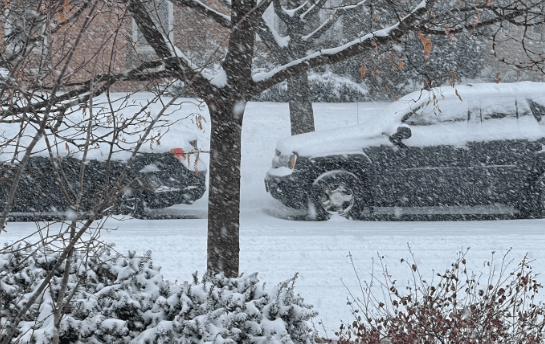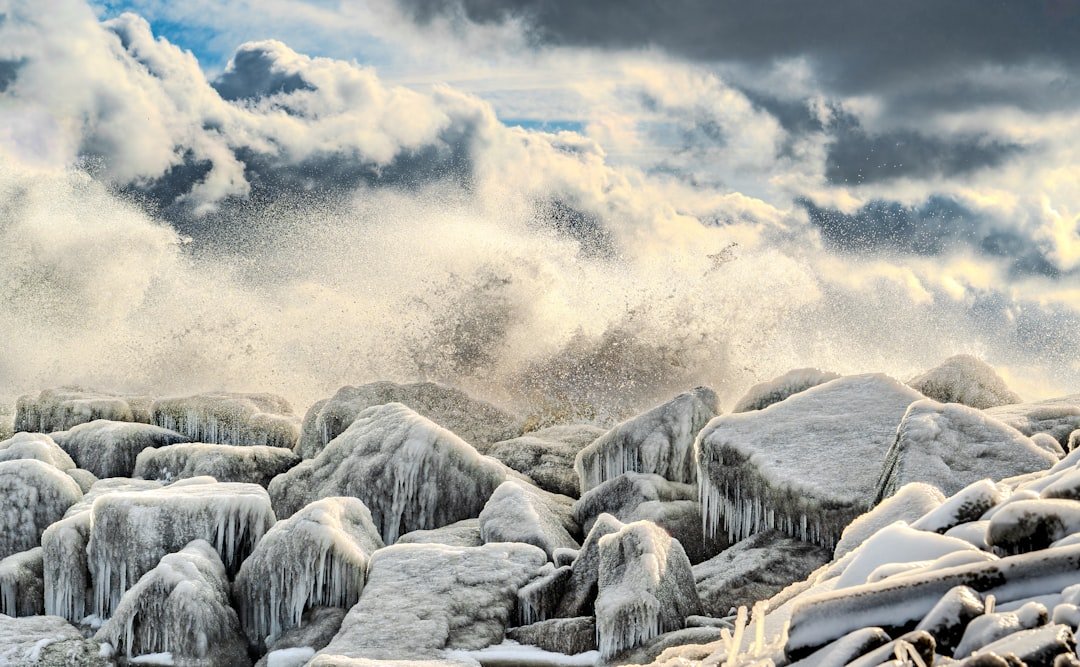Weather
Winter Weather Advisory Issued for Northern Minnesota and Northwest Wisconsin
Published
2 years agoon
By
Jack
Winter Weather Advisory Issued for Northern Minnesota and Northwest Wisconsin: As the winter season takes its full grip, residents of Northern Minnesota and Northwest Wisconsin brace themselves for the challenges brought by severe weather conditions. The issuance of a winter weather advisory underscores the need for heightened awareness and preparedness among communities in these regions.
Table of Contents
ToggleUnderstanding the Winter Weather Advisory
A winter weather advisory serves as a crucial alert system, informing residents and travelers about impending hazardous weather conditions. In the case of Northern Minnesota and Northwest Wisconsin, this advisory is particularly significant due to the region’s susceptibility to extreme winter phenomena.
Preparedness Measures for Residents
Winter Weather Advisory Issued for Northern Minnesota and Northwest Wisconsin: Residents in the affected areas must take proactive steps to ensure their safety and well-being during adverse weather conditions. Here are some essential measures to consider:
- Stay Informed: Keep abreast of weather updates through reliable sources such as local news channels, weather apps, or official government websites.
- Emergency Supplies: Stock up on essential supplies, including non-perishable food items, drinking water, batteries, and first-aid kits, to sustain yourself during emergencies.
- Winterizing Your Home: Take necessary precautions to winterize your home, including insulating pipes, sealing drafts, and ensuring adequate heating systems.
- Travel Advisory: Exercise caution while traveling, and if possible, avoid unnecessary trips during inclement weather conditions. If travel is unavoidable, ensure your vehicle is equipped with emergency supplies and adhere to road advisories.

Impact on Transportation and Infrastructure
Winter Weather Advisory Issued for Northern Minnesota and Northwest Wisconsin: The onset of severe winter weather can significantly disrupt transportation networks and infrastructure in the region. Snow accumulation, icy roads, and reduced visibility pose substantial challenges to motorists and commuters alike. As a result, authorities often implement precautionary measures such as road closures and speed restrictions to mitigate potential risks.
Community Response and Support
In times of crisis, community solidarity and support play a pivotal role in ensuring the well-being of residents. Local authorities, emergency responders, and community organizations work tirelessly to provide assistance and support to those in need. Initiatives such as shelter provisions, emergency hotlines, and wellness checks contribute to the collective resilience of affected communities.
Winter Weather Advisory Issued for Northern Minnesota and Northwest Wisconsin: Winter weather advisories are issued to alert residents and travelers about potentially hazardous weather conditions. These advisories are particularly crucial for regions like Northern Minnesota and Northwest Wisconsin, where extreme winter conditions are common. Understanding the implications of such advisories and taking necessary precautions can help mitigate risks and ensure safety for individuals and communities.
Understanding the Winter Weather Advisory System
What does it mean?
A winter weather advisory is a notification issued by meteorological authorities to warn the public about adverse winter weather conditions. These conditions may include snow, ice, freezing rain, or a combination of these elements. Winter weather advisories indicate conditions that could lead to travel difficulties and other safety hazards.
How is it issued?
Winter Weather Advisory Issued for Northern Minnesota and Northwest Wisconsin: Meteorologists monitor weather patterns and issue advisories based on forecasted conditions. They consider factors such as temperature, precipitation, wind speed, and visibility to determine the severity of the advisory. The National Weather Service (NWS) and other local authorities issue advisories through various communication channels, including radio, television, websites, and mobile apps.
Who issues it?
Winter weather advisories are typically issued by the National Weather Service offices covering the affected regions. In Northern Minnesota and Northwest Wisconsin, advisories are issued by the NWS offices in Duluth, Minnesota, and La Crosse, Wisconsin, respectively.
Impact on Northern Minnesota and Northwest Wisconsin
Weather conditions
The issuance of a winter weather advisory indicates that hazardous winter weather conditions are expected or occurring in the region. This may include significant snowfall, sleet, freezing rain, or a combination of these elements. Such conditions can lead to reduced visibility, slippery roads, and difficulties in outdoor activities.
Safety precautions
Winter Weather Advisory Issued for Northern Minnesota and Northwest Wisconsin: Residents and travelers should take precautions to ensure their safety during a winter weather advisory. This includes staying informed about weather updates, limiting travel if possible, and taking measures to protect themselves from cold temperatures and icy conditions.
Preparation Tips for Residents
Home preparedness
Residents should prepare their homes for winter weather conditions by ensuring adequate heating, insulation, and emergency supplies. This includes stocking up on food, water, batteries, and blankets in case of power outages or other emergencies.
Vehicle preparedness
It is essential to prepare vehicles for winter driving conditions by checking tires, brakes, antifreeze levels, and windshield wipers. Additionally, drivers should keep emergency kits in their vehicles, including items such as a flashlight, shovel, ice scraper, and sand or kitty litter for traction.
Travel Considerations
Road conditions
During a winter weather advisory, road conditions can deteriorate rapidly due to snow and ice accumulation. Drivers should exercise caution, reduce speed, and allow extra time for travel. It is advisable to avoid unnecessary trips and stay off the roads during severe weather conditions if possible.
Flight cancellations
Air travelers should be aware of the potential for flight delays and cancellations during winter weather advisories. Airlines may adjust schedules or cancel flights to ensure passenger safety. Travelers should check the status of their flights regularly and make alternate arrangements if necessary.
Community Response and Resources
Emergency services
Local authorities and emergency services agencies prepare for winter weather events by mobilizing resources and personnel to respond to emergencies. This includes deploying snowplows, coordinating rescue operations, and providing assistance to individuals in need.
Shelters and assistance programs
Shelters and assistance programs may be available to provide temporary housing, warmth, and support to individuals affected by severe winter weather. Community organizations, churches, and government agencies often collaborate to offer services such as shelters, hot meals, and transportation assistance.
Conclusion
The issuance of a winter weather advisory for Northern Minnesota and Northwest Wisconsin underscores the inherent challenges posed by extreme weather conditions during the winter season. By prioritizing preparedness, staying informed, and fostering community resilience, residents can navigate through these challenges with resilience and determination.
As we confront the uncertainties of winter weather, let us remain vigilant, compassionate, and supportive of one another, ensuring the safety and well-being of all members of our communities.
FAQs
- What should I do if I need to travel during a winter weather advisory?
- How can I protect my pets during cold weather?
- Are there any specific precautions for elderly individuals during winter weather advisories?
- What are the signs of frostbite and hypothermia, and how can they be treated?
- How can I help my neighbors who may need assistance during severe winter weather?
Author

